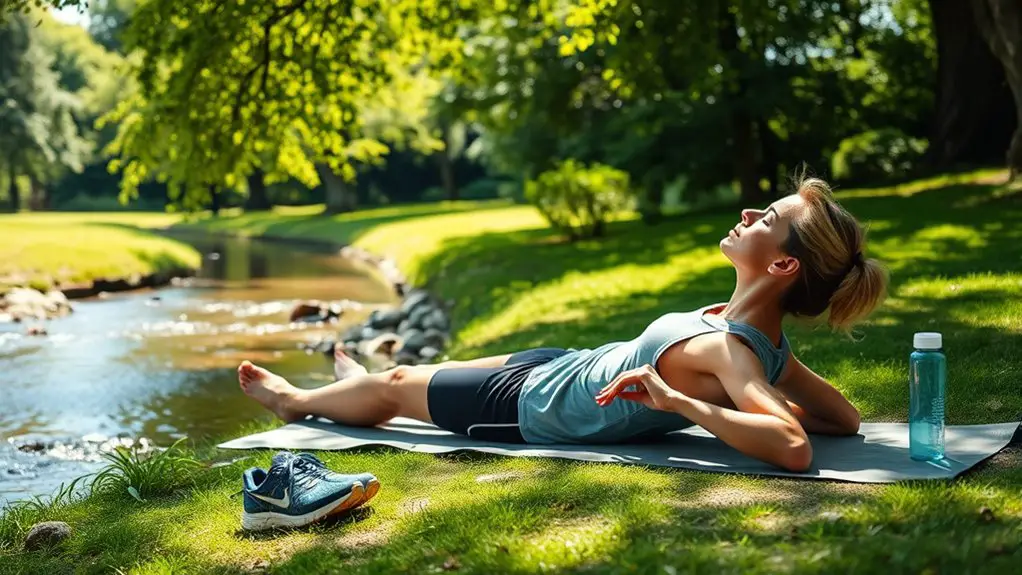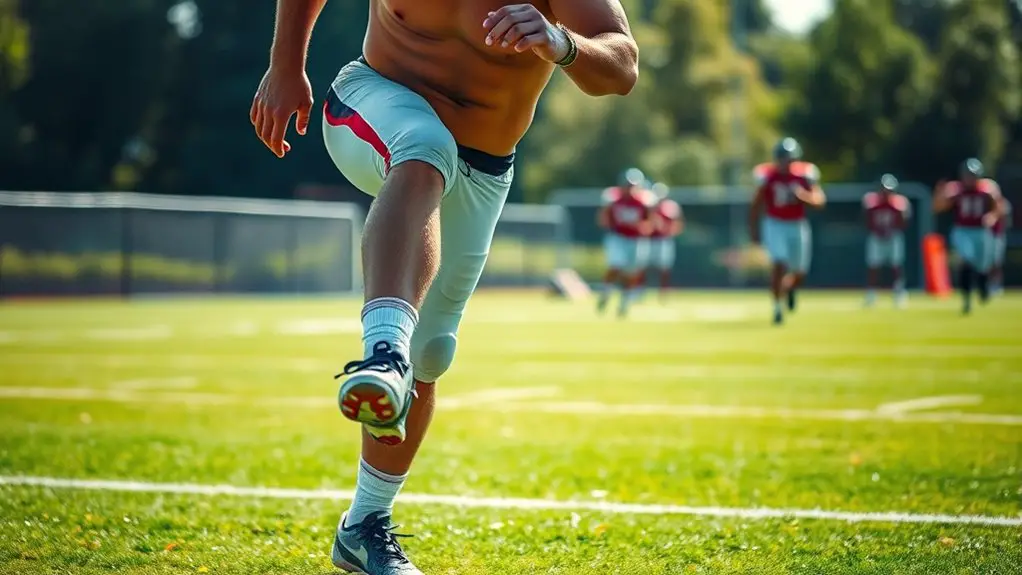Yes, athlete’s foot is a type of ringworm. Both conditions are caused by fungi that thrive in warm, moist environments. Athlete’s foot specifically affects the skin on your feet, often leading to itchiness and discomfort. You might encounter athlete’s foot in communal areas like showers or pools. Understanding the causes and symptoms can help you take steps for prevention and treatment. There’s more to learn about protecting your skin from these infections.
Understanding Fungal Infections
When you think about fungal infections, it’s essential to understand their nature and how they affect your body. Fungal infection types can vary widely, but many target your skin health, leading to discomfort and irritation. These infections thrive in warm, moist environments, often causing conditions like athlete’s foot or ringworm. It’s vital to recognize symptoms early, as they can disrupt your daily life and limit the freedom you seek. By understanding how these infections operate, you empower yourself to take proactive steps in prevention and treatment. Focus on maintaining a healthy lifestyle, keeping your skin clean and dry, and always seeking medical advice if something feels off. Your body deserves the freedom to flourish without the burden of fungal infections.
Causes of Athlete’s Foot
Athlete’s foot is primarily caused by a fungal infection that thrives in warm, moist environments. You might be at risk if you frequently use communal showers or swim in public pools. Understanding these risk factors and triggers can help you prevent this uncomfortable condition.
Fungal Infection Overview
Fungal infections, particularly those caused by dermatophytes, are the primary culprits behind athlete’s foot. These fungi thrive in warm, moist environments, making your feet a prime target. You can catch the infection through fungal transmission, often in communal spaces like gyms or pools.
Here’s a quick overview of common fungal infections related to athlete’s foot:
| Type of Fungal Infection | Infection Prevention |
|---|---|
| Tinea Pedis | Keep feet dry and clean |
| Tinea Cruris | Wear breathable clothing |
| Tinea Manuum | Avoid sharing footwear |
Risk Factors and Triggers
Several factors can increase your risk of developing athlete’s foot. If you have a genetic predisposition to fungal infections, you might find yourself more susceptible. Your lifestyle habits also play a big role; for instance, if you often wear damp or tight shoes, you’re creating a perfect environment for fungi to thrive. Frequenting communal showers or swimming pools can expose you to the fungus as well. Additionally, if you don’t practice good foot hygiene, like keeping your feet clean and dry, you’re setting yourself up for trouble. Being mindful of these factors can help you stay free from athlete’s foot, allowing you to enjoy your freedom without the irritation of this pesky condition.
Causes of Ringworm
Ringworm is caused by fungal infections that thrive in warm, moist environments. You might be surprised to learn that factors like humidity and close contact with infected individuals can increase your risk. Understanding these causes can help you take steps to protect yourself from this common skin condition.
Fungal Infections Overview
Although many people associate ringworm with a specific condition, it’s actually a term that describes a group of skin infections caused by fungi. These infections fall under the fungal classification known as dermatophytes, which thrive on the keratin found in skin, hair, and nails. You might encounter different infection types, like tinea corporis (body), tinea capitis (scalp), and of course, tinea pedis, better known as athlete’s foot. These fungi spread easily through direct contact or contaminated surfaces, so it’s important to stay vigilant. If you’re after the freedom of healthy skin, understanding these infections is key. By recognizing the signs and acting promptly, you can reclaim that confidence and comfort you deserve.
Environmental Risk Factors
When it comes to developing ringworm, certain environmental factors can greatly increase your risk. Understanding these can help you take control of your foot hygiene and moisture management. Here are some key factors to evaluate:
- Warm, humid environments: Perfect breeding grounds for fungi.
- Shared spaces: Gyms, pools, and locker rooms can harbor spores.
- Poor foot hygiene: Neglecting cleanliness invites trouble.
- Wet footwear: Damp shoes create a cozy spot for fungi.
- Skin contact: Sharing towels or socks can spread the infection.
Symptoms of Athlete’s Foot
Athlete’s foot often presents with a range of uncomfortable symptoms that can vary from person to person. You might notice an itchy rash, typically between your toes or on the soles of your feet. This rash can become quite bothersome, urging you to scratch and seek relief. Another common symptom is skin peeling, which can lead to discomfort and even cracking if left untreated. You may also experience a burning sensation or redness in the affected areas. These symptoms can hinder your freedom to enjoy daily activities, so it is crucial to address them promptly. Remember, taking action early can help you reclaim your comfort and keep your feet healthy and happy.
Symptoms of Ringworm
Ringworm can manifest through a variety of symptoms that might catch you off guard. You might notice some changes on your skin, which can lead to a ringworm diagnosis. Keep an eye out for these signs:
- Red, circular rash with clearer skin in the center
- Itching or irritation that seems to worsen over time
- Flaky or scaly patches that may become crusty
- Blisters or pustules that can appear in some cases
- Hair loss in areas where the fungus has taken hold
Recognizing these symptoms is essential for seeking prompt ringworm treatment. The sooner you identify what’s happening, the quicker you can regain your freedom from this pesky infection. Don’t hesitate to consult a healthcare professional if you suspect ringworm!
Treatment and Prevention Strategies
Identifying the symptoms of ringworm is just the first step; knowing how to treat and prevent it is equally important. You’ve got options, from home remedies to antifungal medications. For mild cases, applying natural remedies like tea tree oil or coconut oil can help soothe your skin and fight off the infection. However, if the infection persists, over-the-counter antifungal creams or prescription medications can offer a quicker resolution.
To prevent future outbreaks, keep your skin dry and clean, especially between your toes. Wear breathable footwear and avoid walking barefoot in public areas. Remember, freedom from ringworm starts with awareness and proactive measures. Embrace these strategies, and you’ll be one step closer to healthy, happy feet!
Frequently Asked Questions
Can Athlete’s Foot Spread to Other Body Parts?
Yes, athlete’s foot can spread to other body parts, especially if you scratch the affected area. You might notice athlete’s foot symptoms like itching, burning, or peeling skin. To prevent the spread, it’s essential to practice good hygiene and keep your feet dry. For effective athlete’s foot treatment, consider antifungal creams or powders. Remember, maintaining clean and dry feet is key to stopping the infection from moving elsewhere on your body!
Is Athlete’s Foot More Common in Certain Seasons?
Yes, athlete’s foot is more common in warmer months, mainly due to increased humidity levels. During summer, you’re likely to sweat more, creating a perfect breeding ground for the fungi that causes this condition. Seasonal factors like heat and moisture can make it easier for the fungus to thrive, so keeping your feet dry and cool is essential. Embrace the freedom of summer activities while being mindful of foot health!
Can Pets Get Athlete’s Foot From Humans?
No, your pets can’t get athlete’s foot from you. Athlete’s foot is a specific fungal infection that primarily affects humans, and while some fungi can transfer between species, athlete’s foot isn’t one of them. However, pets can have their own fungal infections. To keep your pet healthy, it’s best to maintain good hygiene and watch for any unusual signs. Enjoy your time with your furry friend, knowing they’re safe from this particular infection!
How Long Does Athlete’s Foot Typically Last Without Treatment?
If you imagine your feet as a garden, Athlete’s Foot can linger like weeds. Without treatment, it typically lasts a few weeks to months, with symptoms like itching, burning, and peeling. Like a garden overrun, the longer you wait, the worse it gets. You’ve got treatment options, from antifungal creams to powders, which can help reclaim your freedom. Don’t let those pesky weeds take root; act swiftly to restore your foot’s harmony!
Are There Home Remedies for Athlete’s Foot?
Yes, there are natural treatments for athlete’s foot that can be effective remedies. You might try soaking your feet in a mixture of vinegar and water or applying tea tree oil, known for its antifungal properties. Garlic and baking soda can also help. Keeping your feet dry and wearing breathable shoes will aid in recovery. Don’t forget to maintain good hygiene to prevent future outbreaks, giving you the freedom to walk comfortably again!




